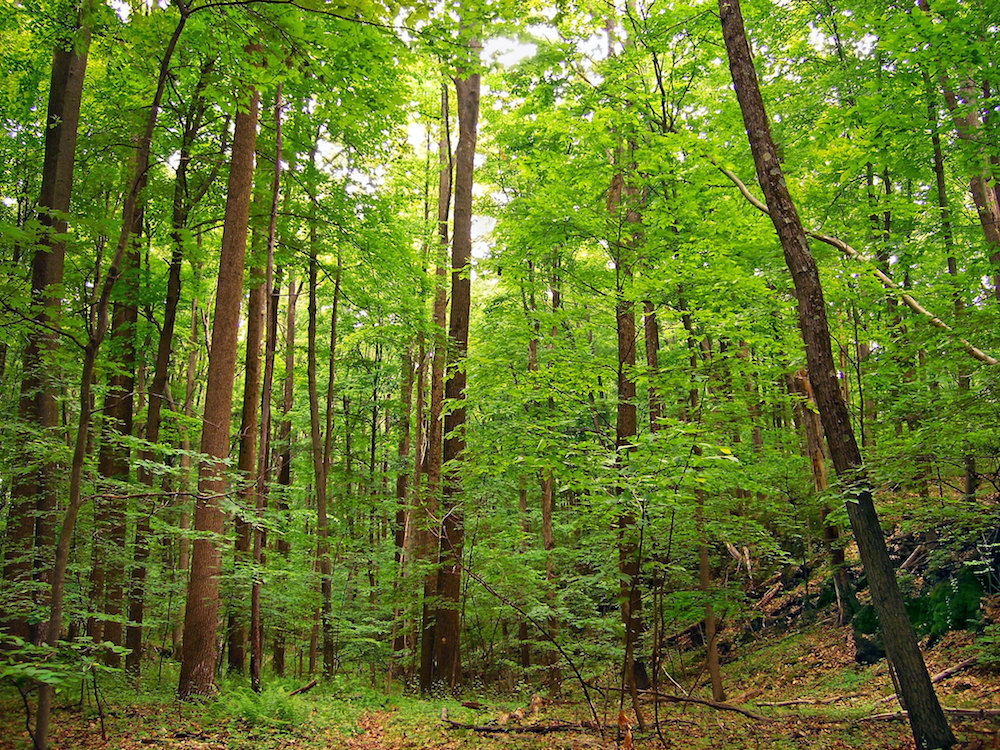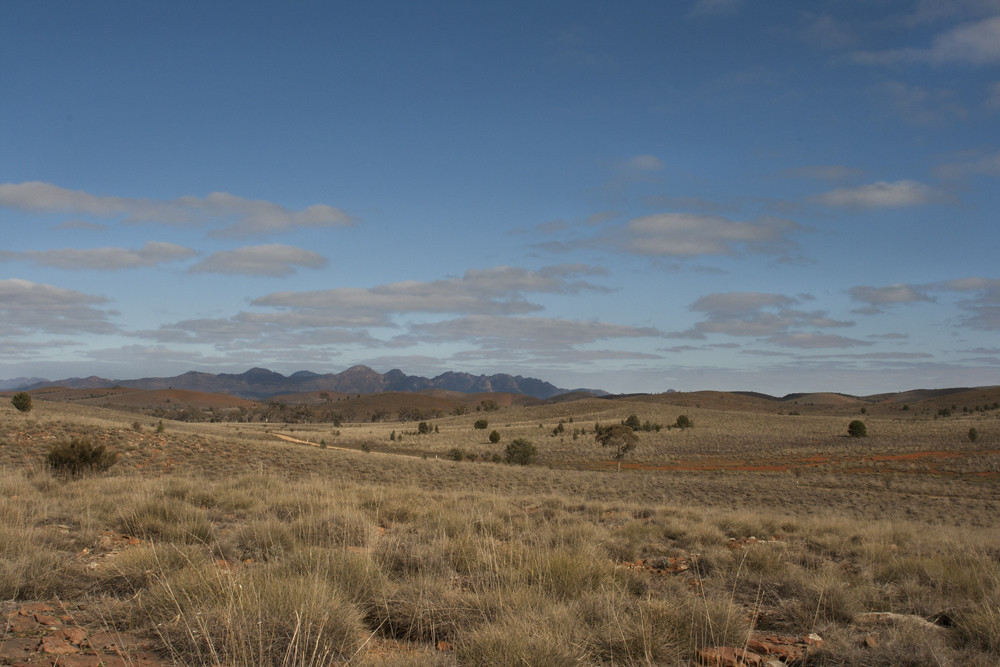Are Pandemics Good for the Environment?

In the midst of the COVID-19 pandemic, many have noted that the Earth seems to be recovering from degradation and pollution. While reports of dolphins returning to the canals of Venice turned out to be false, animals have indeed been spotted in abandoned city streets and waterways around the world, and declines in pollution and emissions have been well-documented over some urban and industrial centers. It is even being predicted that global greenhouse gas emissions will fall 8 percent this year: an unprecedented decline to levels not seen in a decade.
For some, this pattern begs a rather uncomfortable question: Are pandemics good for the environment?
For an answer, we can look to the past. As a human ecologist and an archaeologist who studies the environmental consequences of disease outbreaks in human history, I spend my days attempting to reconstruct past human population levels, collect data on environmental shifts, and unravel the social and ecological consequences of potentially apocalyptic epidemics and pandemics.
My specialty is in understanding the environmental and demographic consequences of the disease outbreaks that occurred in eastern North America following European colonization in the 16th and 17th centuries. (Because outbreaks in the Americas tended to be local and may have resulted from different diseases, they are more often called “epidemics.” But the aggregate picture over the Western Hemisphere was much the same as a “pandemic.”) I also study other outbreaks for comparison, including the bubonic plague pandemic in 14th-century Eurasia known as the Black Death.
For both of these disease outbreaks, massive mortality and economic shifts led to profound environmental consequences on both local and global scales.
While positive environmental outcomes did emerge, the story is far more complicated. In many cases, the benefits were outweighed by the detrimental effects experienced by survivors: Abrupt depopulation does not always benefit the environment and can lead to economic stagnation or collapse, along with a loss of important genetic, cultural, and intellectual diversity. And history also teaches us that wealthy elites tend to seize upon any opportunity to exploit a situation for their own economic benefit, often to the detriment of the environment.
Insights into how people in the past responded to these pandemics can provide guidance on how to handle today’s outbreaks and into how our global environment will fare. Unfortunately, there’s no sugarcoating it: The situation appears dire.
After the bubonic plague hit Europe in 1347, at least one-third of the overall population died within a few years. Similar, but less well-documented, mortality occurred in other regions, such as North Africa and the Middle East. Plague outbreaks continued to periodically ravage Europe’s population for centuries afterward, but this 14th-century one—known as the Black Death—was the most severe. Death swept the continent, and mortality rates were much higher in urban areas, sometimes approaching 60–70 percent. Fear was pervasive. The persecution of ethnic minorities increased. People touted the benefits of curative home remedies involving garlic and other herbs, and the economy experienced severe shocks. History does indeed repeat itself.
When the pestilence finally abated, at least temporarily, huge areas of agricultural land were abandoned, with nobody left to work them. Many of the peasant laborers who had tilled the fields died or, in some cases, migrated to urban centers, risking disease exposure for economic opportunity. Left alone, many fields were reclaimed by forests. These new-growth forests are thought to have lowered atmospheric carbon dioxide levels. A glacial ice core also revealed a reduction in atmospheric lead pollution in the wake of the Black Death, as mining and metallurgical activity declined in intensity. The environment was rebounding.
In the Western Hemisphere, just two centuries later, a similar pattern emerged. European colonists, hot on the heels of Christopher Columbus, eagerly established settlements, trading posts, and missions throughout North and South America, seeking access to resources from which they could profit in European markets. Epidemics of smallpox, influenza, and other diseases quickly spread throughout Indigenous communities. Combined with the negative health effects of colonial warfare and conflict, socioeconomic marginalization, and outright acts of genocide at the hands of Europeans, Indigenous people died by the millions. This loss of life was staggering—up to 95 percent of the population may have been lost to the combined effects of disease and colonization over several generations.
While reforestation is certainly a desirable goal, it should be obvious that mass death and genocide are not the ways to bring about positive changes.
Just as in 14th-century Europe, fields of corn and other crops were reclaimed by forests, with no one left to farm them. This reforestation absorbed an increasing amount of carbon dioxide and atmospheric CO2 dropped precipitously at this time, contributing to a cooling of global temperatures. Forest regrowth has been identified in the Amazon rainforest, the desert Southwest of the United States, and possibly in southern New England as well.
It’s important to note that the scale of reforestation necessary for reducing today’s temperature would be colossal. Calculations show that even the large-scale reforestation that followed the genocide of tens of millions of Indigenous people in the Americas would only counteract perhaps two years of today’s fossil fuel emissions. Reforestation is therefore only part of the solution to climate change.
More importantly, while reforestation, declining atmospheric CO2, and reductions in environmental pollutants are certainly desirable goals, it should be obvious that mass death and genocide are not the ways to bring about such positive changes. Such a view would constitute ecofascism: the political concept that forced costs to individuals, sometimes in the form of their lives, benefit the environment.
While such ideas are now a common motif in science fiction, they have a less entertaining history. With origins in Nazi ideology, ecofascism was enthusiastically espoused by “Unabomber” Ted Kaczynski, along with more recent domestic terrorists in the United States. The notion of promoting population reduction for the sake of the environment can quite easily be hijacked by ethnonationalists and racists, leading to targeted genocide of specific populations in society.
Moral and ethical objections aside, there is also plenty of evidence that the environmental impacts of depopulation aren’t always good.
Take deer in what is now the United States as an example. Prior to European colonization, deer were a common and important animal food resource for Indigenous communities across North America. Human hunting kept their populations low in some regions, such as in present-day California, the desert Southwest, and Texas. Individual deer in those smaller populations experienced reduced competition, which increased the body size of the average deer.
After the arrival of Europeans, the loss of Native American lives from disease and colonization reduced the intensity of hunting and allowed deer populations to grow. This rebound was short-lived, however, as Euro-American settlers intensively hunted deer, often for profit in the deerskin trade, and destroyed much of the animal’s preferred habitat. Then, with the falling popularity of hunting and the creation of habitats in which deer thrive, through suburban expansion and agriculture, their populations rebounded yet again. Today overabundant deer are well-known to be the cause of numerous problems, both for North American ecosystems and motorists.
This overabundance is a modern result of the same processes that European colonization spurred in the 16th and 17th centuries: the decline of traditional hunting activities and habitat changes.
Complicated environmental consequences of depopulation also occurred in Egypt in the wake of bubonic plague outbreaks. By the early Middle Ages, Egyptian agriculture relied on sophisticated irrigation systems designed to channel water into otherwise arid lands and promote soil productivity. Following plague outbreaks in the 14th century, this irrigation infrastructure could not be maintained due to labor shortages from mortality and the migration of rural populations to urban centers. Once-fertile fields became increasingly arid and unusable: The environment deteriorated, at least from the perspective of the people and animals living there.
The cases of precolonial Native American deer hunting and 14th-century Egyptian irrigation highlight an important fact: Human impacts on the environment are not inherently bad.
Human activities sometimes benefit our ecosystems and ending them can have profoundly negative implications. When Aboriginal Australians were forced off their lands in the early to mid-20th century, no one was left to burn the spinifex grasslands while hunting game. A wave of extinctions followed for native wildlife. It turns out that burning the grasslands actually promoted ecosystem health by creating habitat for a wide variety of species. Only with the return of Indigenous people to their ancestral lands, and the revitalization of traditional hunting and land management practices, have these ecosystems begun to heal.
Clearly, depopulation does not always lead to desirable outcomes, especially when traditional ways of life that have coevolved with ecosystems are disrupted. Humans certainly impact the environment negatively, but we can also do so positively and sustainably.
Thus far, the population losses due to COVID-19, while unacceptably severe, are far lower than those experienced under European colonization or the Black Death. Demographic loss will hopefully not be an important cause of changes associated with our current pandemic. Emissions reductions will probably not persist once the global economy kicks back into gear, and wild animals will surely leave city streets once the crowds return.
The longer-term environmental consequences of the COVID-19 pandemic will more likely result from political and economic shifts in the coming years.
Some of these impacts may be positive. Working remotely may increasingly be viewed as a viable option in future workplaces, which could cut down on the environmental costs of transportation. Some have speculated that we could experience less political polarization and increased trust in experts in the wake of the COVID-19 pandemic, though recent protests may provide evidence to the contrary. Such changes could, importantly, lead to a greater willingness to take action on climate change, as indicated by new polling that suggests voters are now more supportive of the Green New Deal than prior to the COVID-19 outbreak.
However, to judge from history, the political and economic changes won’t all be good.
In the wake of the Black Death in England, wages rose due to the scarcity of labor, inflation drove grain prices higher, rents fell, and economic inequality decreased. Workers suddenly had greater bargaining power and wealthy landowners found themselves at risk of losing their control over the economy. In response, these landowners petitioned King Edward III and Parliament to enact the Ordinance of Labourers in 1349 and the Statute of Labourers in 1351 to cap wages and prices, among other things, in order to preserve landowner wealth and prevent further economic and political power from shifting to the working class.
Such use of political influence by wealthy elites in the wake of disasters still occurs today. After the Great Recession of 2007–2009, American corporations used government stimulus money to buy up shares in their own companies, artificially inflating the value of their own stocks and the stock market as a whole, exacerbating economic inequality. Following the U.S. invasion of Iraq in 2003, oil companies such as Exxon Mobil rode the wave of surging oil prices and seized the opportunity to stake out claims to oil in the occupied nation.
These are all cases of disaster capitalism. When disasters or upheavals occur, large corporations and the wealthy are primed to exploit the situation for their own benefit.
Our current crisis is no exception. The U.S. Environmental Protection Agency is now allowing factories and power plants to regulate their own pollution of air and water, while the plastics industry is seizing on fears of virus transmission to lobby for single-use plastics as the safest option during the pandemic. The fossil fuel industry is looking to win big from government stimulus spending and new state legislation that criminalizes some actions associated with pipeline protests—all while the renewable energy sector is struggling to stay in the game.
Wealthy elites during the time of COVID-19 appear to be behaving much as the wealthy elites did after the Black Death: fighting to profit from the crisis without regard for the working class or environmental consequences. Government stimulus spending and new legislation will likely result in disproportionate benefits to the large corporations that bear the most responsibility for our current climate crisis.
Environmental exploitation is bound to continue, if not accelerate, in the coming years. Any short-term benefits from an environmental rebound in 2020 will not last if multinational corporations press on toward the imminent environmental catastrophe faced by our planet.
Humanity must therefore work all the harder to stave off climate crisis in the wake of this pandemic, or our own global society may end up as a history lesson in what not to do.





































